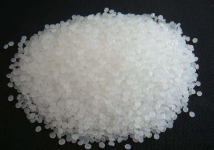read: 1097 time:2025-07-10 11:48:16 from:化易天下
When it comes to cryopreservation, precision and consistency are key. The use of isopropanol in the cryopreservation process, specifically in products like the Mr. Frosty freezing container, plays a crucial role in ensuring the viability and stability of biological samples. This article will delve into why isopropanol is added to Mr. Frosty, highlighting its importance in controlled-rate freezing.
Mr. Frosty is a widely used freezing container designed to ensure a consistent and controlled rate of cooling, typically at a rate of approximately -1°C per minute. This controlled-rate freezing is essential in cryopreservation because it minimizes the formation of ice crystals within cells, which can cause significant damage to cellular structures. The device is often used in laboratories to freeze sensitive biological samples, such as cells, tissues, or small organisms.
The primary reason to add isopropanol in Mr. Frosty is to maintain a consistent and uniform rate of cooling. Isopropanol, a common laboratory solvent with a low freezing point of -89°C, surrounds the samples in Mr. Frosty and ensures that the cooling process occurs gradually. This slow and consistent cooling is vital for preserving the integrity of the cells or biological samples by preventing thermal shock and reducing the likelihood of intracellular ice formation.
Isopropanol also acts as a heat transfer medium. As the samples are placed in the Mr. Frosty container and exposed to the cold environment of a freezer (typically at -80°C), the isopropanol absorbs heat from the samples and releases it slowly. This gradual release of heat facilitates the controlled cooling rate, which is critical for achieving the desired cryopreservation outcomes.
One of the main challenges in cryopreservation is avoiding the formation of ice crystals within cells, which can occur if the cooling rate is too rapid. Ice crystals can puncture cell membranes, leading to cell death. The inclusion of isopropanol in Mr. Frosty helps mitigate this risk by ensuring a more uniform cooling process. This uniformity in temperature decrease is essential in preventing sudden drops in temperature that could lead to ice crystal formation within the samples.
The controlled environment created by isopropanol is particularly beneficial for freezing sensitive cell types, such as stem cells or primary cells, which are highly susceptible to damage during the freezing process. By adding isopropanol to Mr. Frosty, researchers can improve the survival rate of these cells post-thaw, which is critical for their subsequent use in experiments or therapeutic applications.
In summary, the reason why to add isopropanol in Mr. Frosty is primarily to ensure a controlled and gradual freezing process. This controlled cooling is vital for maintaining the structural integrity and viability of biological samples during cryopreservation. By using isopropanol, laboratories can achieve more consistent results, reduce the risk of cell damage, and ultimately improve the success rates of their cryopreservation efforts.
The use of isopropanol in Mr. Frosty is a simple yet highly effective strategy that enhances the reliability of cryopreservation techniques, making it a staple in laboratories that require precise temperature control during the freezing process.

Jincheng Petrochemical's 300000 ton polypropylene plant successfully trial production, 2024 polypropylene market analysis

The ABS market remains sluggish, what is the future direction?

Market differentiation of bisphenol A intensifies: prices rise in East China, while prices generally decline in other regions

The production method and process flow of silicone acrylic lotion, and what are the common raw materials